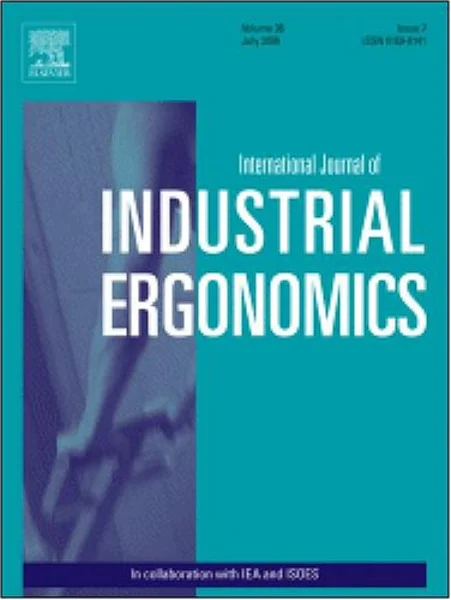-
endurance time of grip-force as a function of grip-span, posture and anthropometric variables
جزئیات بیشتر مقاله- تاریخ ارائه: 1390/02/13
- تاریخ انتشار در تی پی بین: 1390/02/13
- تعداد بازدید: 507
- تعداد پرسش و پاسخ ها: 0
- شماره تماس دبیرخانه رویداد: -
the time to volitional exhaustion (endurance time) for sustained contractions is considered as a valid parameter to quantify fatigue and to determine the required rest pauses between two successive contractions. in this study, the effects of grip-span, shoulder posture and anthropometric characteristics on endurance time of grip-force during sustained 30% of maximal voluntary grip-force were investigated. both subjective and objective measures of fatigue were used in determining the endurance times. twelve male subjects performed sustained isometric handgrip contractions using a handgrip dynamometer at the combinations of three different grip span settings and two shoulder postures. the investigated three grip spans were the optimal, 2 cm narrower than the optimal, and 2 cm wider than the optimal. the investigated two shoulder postures were neutral and 25° flexion. the outcome measures were: endurance time, surface electromyography of related forearm muscles, heart rate, blood pressure, and ratings of perceived discomfort/pain. the results indicate that the endurance time decreases significantly as the grip span deviates from the optimal in both directions. on the other hand, the considered shoulder postures did not have a significant effect on the endurance time. further analysis indicated a significant negative correlation between endurance time and rest pause and a marginal positive correlation between maximum voluntary grip-force and rest pause. body mass index, and volume of forearm and hand had also significant negative correlation with endurance time. the comparisons are made with a number of existing endurance models and the impact of findings are discussed. relevance to industry in accurate establishment of the time standards, muscular fatigue allowances need to be taken into account. the endurance time for sustained isometric contractions is correlated with the required rest allowances (pauses) for intermittent static contractions; and therefore, required muscular fatigue allowances can be estimated from the endurance times.
مقالات جدیدترین رویدادها
-
استفاده از تحلیل اهمیت-عملکرد در ارائه الگوی مدیریت خلاقیت سازمانی و ارائه راهکار جهت بهبود
-
بررسی تاثیر ارزش وجوه نقد مازاد بر ساختار سرمایه شرکت های پذیرفته شده در بورس اوراق بهادار تهران
-
بررسی تأثیر سطح افشای ریسک بر قرارداد بدهی شرکت های پذیرفته شده در بورس اوراق بهادار تهران
-
بررسی تأثیر رتبه بندی اعتباری مبتنی بر مدل امتیاز بازار نوظهور بر نقد شوندگی سهام با تأکید بر خصوصی سازی شرکت ها
-
تأثیر آمیخته بازاریابی پوشاک ایرانی بر تصویر ذهنی مشتری پوشاک ایرانی (هاکوپیان)
-
بررسی تحلیلی سیره عقلا به انضمام چگونگی کاشفیت از حکم آن و ثمرات
-
شبیه سازی معتبر رفتار قابهای عرضی در پلهای فولادی خمیده
-
ارزیابی عملکرد لرزه ای میراگرهای تسلیمی t-adas در قاب های فولادی بلند مرتبه تحت تحریکات حوزه نزدیک گسل
-
بهینه یابی سازه های قاب خمشی فولادی با استفاده از الگوریتم ژنتیک تعمیم یافته تحت قیود قابلیت اعتماد
-
تاثیرات سیستم اتوماسیون اداری و بایگانی الکترونیک بر عملکرد سازمان
مقالات جدیدترین ژورنال ها
-
مدیریت و بررسی افسردگی دانش آموزان دختر مقطع متوسطه دوم در دروان کرونا در شهرستان دزفول
-
مدیریت و بررسی خرد سیاسی در اندیشه ی فردوسی در ادب ایران
-
واکاوی و مدیریت توصیفی قلمدان(جاکلیدی)ضریح در موزه آستان قدس رضوی
-
بررسی تاثیر خلاقیت، دانش و انگیزه کارکنان بر پیشنهادات نوآورانه کارکنان ( مورد مطالعه: هتل های 3 و 4 ستاره استان کرمان)
-
بررسی تاثیر کیفیت سیستم های اطلاعاتی بر تصمیم گیری موفق در شرکتهای تولیدی استان اصفهان (مورد مطالعه: مدیران شرکتهای تولیدی استان اصفهان)
-
تاثیر اندوه مقایسه بر سایش اجتماعی با میانجی گری حسادت خاموش
-
بررسی نقش های بیولوژیک و اجتماعی - اقتصادی خرس قهوه ای (ursus arctos syriacus) در توده های جنگلی شمال ایران
-
بررسی ابعاد موفقیت پیاده سازی سیستم های هوش تجاری در شرکت های تولیدی ( مطالعه موردی: شرکت تولیدی سیمان )
-
بررسی و شناخت ماهیت مالیات و اقسام آن
-
the role of environmental graphic in the identification of urban public spaces




سوال خود را در مورد این مقاله مطرح نمایید :